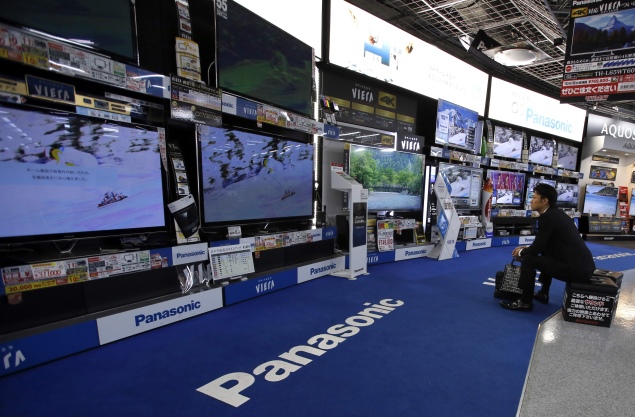Panasonic, Sony end their joint OLED TV development alliance

The two companies, which have been scaling back their TV operations after chalking up heavy losses in recent years, will instead focus their efforts on conventional liquid crystal display screens for so-called 4K ultra high-definition televisions which have shown greater promise, company spokesmen said.
(Also see: Panasonic to shut down plasma TV production by March 2014: Report)
Sony and Panasonic formed the OLED alliance in June last year with the goal of developing mass-production technology by the end of 2013. Doubts had mounted over the partnership's prospects, however, as it became clear it would miss its target.
(Also see: Sony, Panasonic team-up to make OLED televisions)
OLED panels, while used in smartphones and tablets by Samsung Electronics Co Ltd, are still considered prohibitively expensive for larger sizes used in televisions.
They have not delivered the growth originally envisioned by the Japanese companies and are unlikely to be commercially viable in the near future, the spokesmen said.
Both companies displayed 56-inch OLED televisions at this year's CES electronics show in January. The spokesmen said they would continue independent efforts to develop OLED technology.
(Also see: Sony showcases range of TVs at CES, headlined by world's first 4K OLED TV)
LG Electronics Inc, considered the front-runner in OLED televisions, has models on the market but they are significantly more expensive than comparable LCD televisions and have yet to achieve significant sales. Samsung also markets OLED televisions, which offer higher resolution and use less power than LCD panels.
© Thomson Reuters 2013
Get your daily dose of tech news, reviews, and insights, in under 80 characters on Gadgets 360 Turbo. Connect with fellow tech lovers on our Forum. Follow us on X, Facebook, WhatsApp, Threads and Google News for instant updates. Catch all the action on our YouTube channel.
Related Stories
- Samsung Galaxy Unpacked 2025
- ChatGPT
- Redmi Note 14 Pro+
- iPhone 16
- Apple Vision Pro
- Oneplus 12
- OnePlus Nord CE 3 Lite 5G
- iPhone 13
- Xiaomi 14 Pro
- Oppo Find N3
- Tecno Spark Go (2023)
- Realme V30
- Best Phones Under 25000
- Samsung Galaxy S24 Series
- Cryptocurrency
- iQoo 12
- Samsung Galaxy S24 Ultra
- Giottus
- Samsung Galaxy Z Flip 5
- Apple 'Scary Fast'
- Housefull 5
- GoPro Hero 12 Black Review
- Invincible Season 2
- JioGlass
- HD Ready TV
- Laptop Under 50000
- Smartwatch Under 10000
- Latest Mobile Phones
- Compare Phones
- Huawei Nova 15
- Huawei Nova 15 Pro
- Huawei Nova 15 Ultra
- OnePlus 15R
- Realme Narzo 90x 5G
- Realme Narzo 90 5G
- Vivo S50 Pro Mini
- Vivo S50
- Asus ProArt P16
- MacBook Pro 14-inch (M5, 2025)
- Huawei MatePad 11.5 (2026)
- OnePlus Pad Go 2 (5G)
- OnePlus Watch Lite
- Just Corseca Skywatch Pro
- Acerpure Nitro Z Series 100-inch QLED TV
- Samsung 43 Inch LED Ultra HD (4K) Smart TV (UA43UE81AFULXL)
- Asus ROG Ally
- Nintendo Switch Lite
- Haier 1.6 Ton 5 Star Inverter Split AC (HSU19G-MZAID5BN-INV)
- Haier 1.6 Ton 5 Star Inverter Split AC (HSU19G-MZAIM5BN-INV)

















